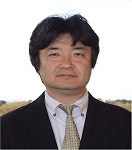
Biography
Biography: Mineo Hiramatsu
Abstract
Carbon nanostructures, namely, graphene-based materials such as carbon nanotube and graphene itself have attracted much attention due to their outstanding properties as well as emerging applications. For the synthesis of diamond and amorphous carbon films, graphene-based materials can be synthesized by several plasma enhanced chemical vapor deposition (PECVD) techniques on heated substrates (600-800ËšC) employing methane and hydrogen mixtures. For example, plane graphene formation can be realized by PECVD on Ni substrate in the remote plasma configuration at relatively low temperatures (~650ËšC). In fact, excess flux of carbon precursors causes supersaturation and ion bombardment induces the nucleation of nanographene, resulting in the formation of vertical nanographene (carbon nanowall, CNW). CNWs are few-layer graphenes standing vertically on a substrate to form a self-supported network of wall structures. The maze-like architecture of CNWs with large-surface-area graphene planes would be useful as electrodes for energy devices, electrochemical and biosensors. Morphology including structure and crystallinity as well as electrical properties of carbon nanostructures should be controlled according to their applications. Plasma
processing has a significant role in fabricating carbon-based materials and achieving their practical use in many areas. We report the current status of the synthesis of plane graphene and vertical graphene using PECVD, and focus on the control of the CNW structures during the growth processes as well as post treatment to be used as platform of the electrochemical and bio applications.

